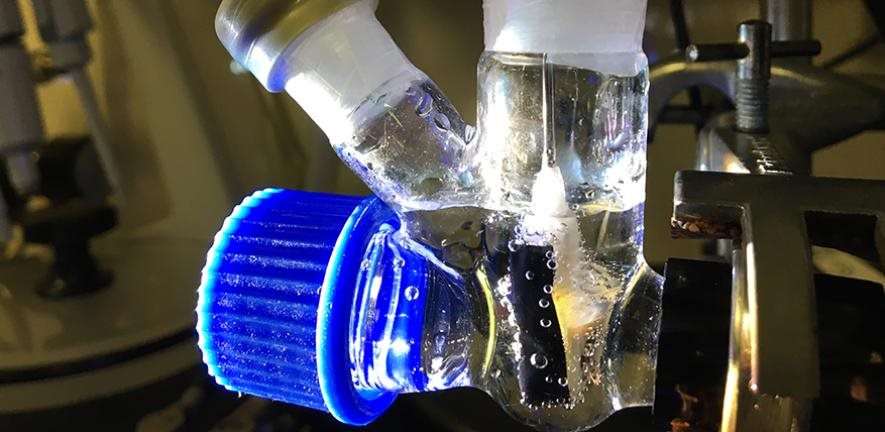
A scaled-down version of the artificial leaf technology in a photoreactor. (Image Credit: Motiar Rahaman)
Cambridge University scientists developed sunlight-powered, leaf-like foliage that harvests CO2 and water, converting them into propanol and ethanol in one step to power carbon-free vehicles. The technology works without relying on the syngas-producing step and has more practical use while contributing to a sustainable, carbon-free future.
The greatest benefits of these solar fuels are that they don't generate carbon dioxide, are 100% renewable, and don't "divert agricultural land away from food production." Even though this tech is at a laboratory scale, the team believes their invention plays a crucial role in moving away from a fossil-fuel-based economy.
Bioethanol is much cleaner than petrol because it's made from plants rather than fossil fuels. Many vehicles use petrol with 10% ethanol (E10 fuel), and the US leads the world in bioethanol production. Nearly 45% of US-grown corn is used for ethanol production.
"Biofuels like ethanol are a controversial technology, not least because they take up agricultural land that could be used to grow food instead," said Professor Erwin Reisner, who led the research.
The team has focused on creating artificial leaves to produce chemicals like syngas, a carbon monoxide and hydrogen mixture that creates fertilizers, fuels, plastics, and pharmaceuticals. However, it must create more complex chemicals in a single solar-powered step to become more practical.
This artificial leaf can now produce clean propanol and ethanol without creating syngas first. The team developed a copper and palladium-based catalyst, optimizing it so that the leaf could produce ethanol and n-propanol. Both are high-density and can be stored and transported without issue. While other teams used electrical power to produce similar chemicals, this became the first time an artificial leaf used the sun's energy to produce complex chemicals.
"Shining sunlight on the artificial leaves and getting liquid fuel from carbon dioxide and water is an amazing bit of chemistry," said Dr Motiar Rahaman, the paper's first author. "Normally, when you try to convert CO2 into another chemical product using an artificial leaf device, you almost always get carbon monoxide or syngas, but here, we've been able to produce a practical liquid fuel just using the power of the Sun. It's an exciting advance that opens up whole new avenues in our work."
Their device is only a proof-of-concept, exhibiting modest efficiency. The researchers are currently attempting to optimize the light absorbers to absorb sunlight better and optimize the catalyst to turn more sunlight into fuel. Additionally, they'll need to upscale the artificial leaf to produce large amounts of fuel.
"Even though there's still work to be done, we've shown what these artificial leaves are capable of doing," said Reisner. "It’s important to show that we can go beyond the simplest molecules and make things that are directly useful as we transition away from fossil fuels.”
Have a story tip? Message me at: http://twitter.com/Cabe_Atwell
